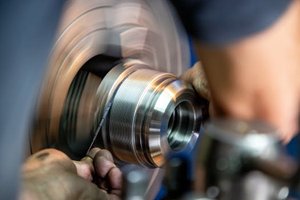🔍 Why CNC Turning? The Unbeatable Advantages
⚙️ Precision You Can Trust
CNC turning consistently delivers tolerances as tight as ±0.0005″ (0.0127mm), something manual lathes struggle with. In a recent aerospace job, we machined 500 inconel turbine shafts with a 99.8% pass rate on CMM checks—thanks to rigid toolpaths and live tooling compensation.
💡 Speed & Repeatability
- Batch production: A hydraulic valve project saw a 70% reduction in cycle times vs. manual turning.
- No operator drift: Once the program’s proven, part 1 and part 1,000 are identical.
📊 Cost Efficiency at Scale
| Scenario | Manual Lathe Cost/Unit | CNC Turned Cost/Unit |
|---|---|---|
| 100 parts | $18.50 | $12.20 |
| 1,000 parts | $16.00 | $6.80 |
| (Data from a 2023 automotive component order) | ||
| — | ||
| ## 🚧 The Hidden Challenges of CNC Turning | ||
| ### ⚠️ Upfront Costs & Learning Curve | ||
| – A basic CNC lathe starts at $50K—10x a manual machine. | ||
| – Mistake to avoid: Underestimating CAM programming time. A “simple” brass fitting took 12 hours of G-code tweaks to eliminate chatter. | ||
 |
||
| ### 🔄 Material Limitations | ||
| – Soft metals (e.g., aluminum): Excel with high RPMs. | ||
| – Sticky alloys (e.g., copper): Demand specialized tool coatings or risk built-up edge. | ||
 |
||
| ### 📉 Overkill for Prototypes? | ||
| For one-offs, setup time can kill ROI. I once spent 3 hours fixturing a prototype that took 8 minutes to cut. Sometimes, manual is faster. | ||
| — | ||
| ## 💡 When to Choose CNC Turning—And When to Skip It | ||
| ### ✅ Best For: | ||
| – High-volume cylindrical parts (shafts, bushings, flanges). | ||
| – Complex features (threads, tapers, grooves) in a single setup. | ||
| – Materials requiring ultra-tight tolerances (e.g., medical implants). | ||
| ### ❌ Think Twice If: | ||
| – You’re making <50 parts (consider subcontracting). | ||
| – The design changes weekly (manual allows faster adjustments). | ||
| – Your shop lacks skilled CNC programmers. | ||
| — | ||
| ## Final Takeaway | ||
| CNC turning is a game-changer for precision and scale, but it’s not a magic bullet. The key is matching the technology to the job—not just following trends. After 20 years, I still ask: “Will this save time, money, or both?” If the answer’s yes, fire up the lathe. If not, there’s no shame in going old-school. |
